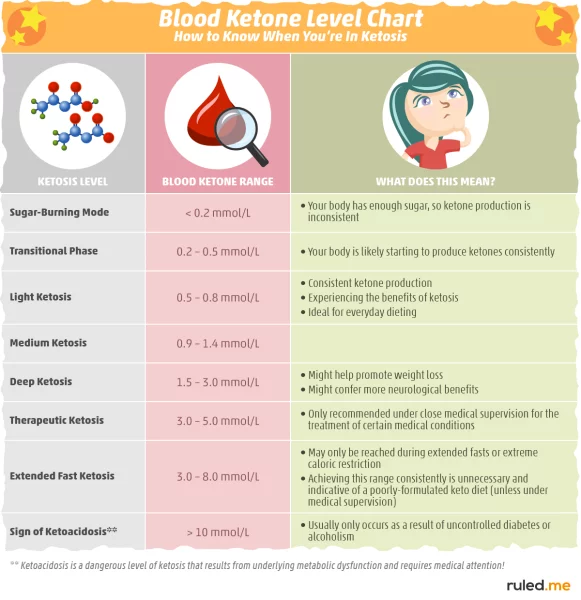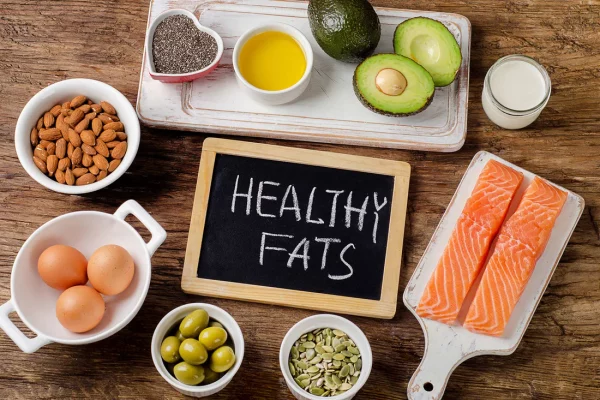Ketosis is a natural metabolic state where the body uses stored fat instead of glucose to generate energy. This is a core factor in the ketogenic diet and is chosen by many people to reduce fat, manage weight, or improve cardiovascular health. However, achieving ketosis quickly is not easy and requires proper adjustments in nutrition and exercise.

Severely reducing carbohydrate intake is the first step to shift the body from using glucose to fat. According to the Academy of Nutrition and Dietetics, 2021, limiting carbohydrates to less than 50 grams per day is an ideal condition for the body to start producing ketones. This accelerates the ketosis process, especially when combined with physical exercises.
Physical activity, especially high-intensity exercises, helps burn glycogen – the stored form of glucose in the body. When glycogen is depleted, the body is forced to switch to fat for energy. The American College of Sports Medicine (ACSM, 2019) recommends exercises like HIIT (High-Intensity Interval Training) or running to increase fat burning efficiency and shorten the time to achieve ketosis.
“The combination of reducing carbohydrates and increasing physical activity is the key to reaching ketosis quickly.” – Academy of Nutrition and Dietetics, 2021
Additionally, intermittent fasting (IF) is another useful method. According to the Journal of Clinical Medicine, 2020, fasting for a period of 16 to 24 hours can promote the body’s switch to more efficient fat burning. However, it is important to consult with a doctor before adopting this method to ensure safety.
Incorporating healthy fats such as olive oil, butter, or nuts also supports the ketosis process. These fats provide energy and help the body maintain stable ketosis. At the same time, controlling protein intake is important, as consuming too much protein can disrupt the ketone production process.

Monitoring ketone levels in the body through blood, urine, or breath tests helps determine whether ketosis has been achieved. These measurement tools allow for optimal adjustments in diet and exercise.
Although ketosis offers many benefits, it is not suitable for everyone. People with type 1 diabetes, liver failure, or metabolic disorders should be cautious and consult a doctor before undertaking it. With persistence and the correct approach, you can utilize ketosis to improve health and effectively achieve fat loss goals.


HPX24h > Fitness > Ketosis: The Key to Accelerating Effective Fat Burning
Top Reads from This Category
Fitness
Fat-Burning Heart Rate: The Key to Optimizing Your Workout
Fitness
What is the Ideal Heart Rate for Running?
Fitness
Tai Chi: The Secret to Improving Balance and Relieving Pain Effectively
Fitness
Walking or Running: Which Is Better for Health and Weight Loss?
Fitness
HIIT Training: A Long-Term Remedy for Brain Health
Fitness
HIIT: The Ultimate Shortcut to Efficient and Comprehensive Fitness
Fitness
Exercise Tips for Pregnancy: Safe, Effective, and Beneficial for Mom and Baby
Discover New Topics
Healthy Eating
The Reasons You Should Eat These Fruits During Pregnancy to Reduce Fatigue and Anemia
Science
Mind-Controlled Prosthetics: A Groundbreaking Advancement in Medicine
Science
NSF Workforce Cuts – Which Path Will the U.S. Take to Stay Competitive in the Global Tech Race?
Parenting Tips
Tips for Helping Preschoolers Develop Healthy Sleep Habits
Space
Exploring Saturn’s Moon Phoebe: Planet-Like Features and Characteristics
Animals
The Way African Ants Use Venom to Paralyze Prey from a Distance
Science
Successful Penis Transplant Surgery: A New Breakthrough in Medical Science
Science
A New Drug Could Treat Depression Within Just 24 Hours
Health
The Link Between Daytime Sleep and Alzheimer’s Disease: What You Need to Know
Science
Gold in the Human Body: A Scientific Look at the ‘Hidden Gold’ Inside You
Science
New Artificial Kidney via Nanotechnology: A Revolutionary Alternative to Dialysis
Health
Forgetfulness Can Bring Unexpected Evolutionary Benefits
Fitness
Active Recovery: The Key to Reducing Soreness and Boosting Workout Performance